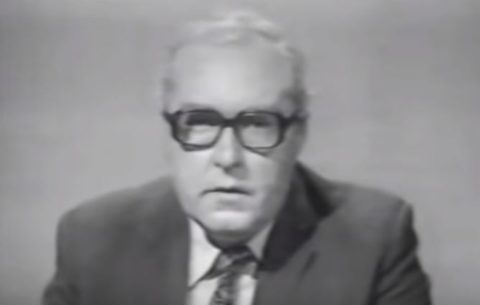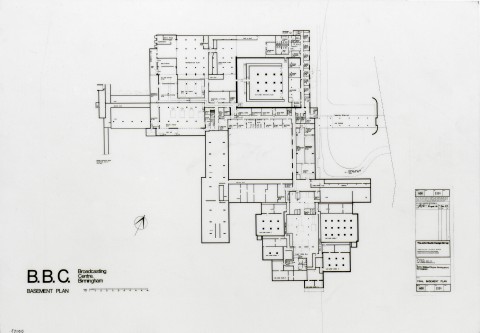This is a 1974 BBC1 screen-grab of one of the original Midlands Today journalists Geoffrey Green – reporting on how transplant surgeons removed a Birmingham man’s kidney not realising he was still alive. Green, who was from Coventry, did his first BBC broadcast on radio in 1950. He died in 2003. Thanks to Andrew Hewkin for sharing this.
The following comments were left on the Pebble Mill Facebook page:
Colin Pierpoint: ‘I remember Geoffrey, we occasionally had a chat in the corridor, and I am sure I worked with him editing his radio 4, and earlier Midland Home Service reports at Pebble Mill and Broad Street. A nice man. Never self important, but a friendly colleague with a laugh and a smile. I remember him laughing at the funny notice in the PM lift about one of our managers. I also came across him on the end of the line with a COOBE doing football reports. Always cooperative. In Broad Street Control Room we used to ring down the line to see if anyone had arrived, and every time Geoffery Green had just put the headphones on, we heard “You rotten bastards!” come down the music line. But always in a light hearted way, and we would all have a laugh about it.’
Pete Smith (former Midlands Today cameraman): ‘Worked with him many times.. a proper gent, lovely man.’
Wendy Edwards: ‘Gronker! Legend of the Newsroom.’
David Lowe: ‘“Hello Flower” was always the greeting I got from him.’
Conal O’Donnell: ‘Geoffrey “Gronker” Green was a great character and a thoroughly professional journalist. He earned his nickname “Gronker” doing live two ways into both radio and tv programmes when he’d ask the producer “how long do you want me to gronk on about this” If it was 45secs that is what you got -neither more nor less. During the 60s & 70s Geoffrey used to vie for airtime with Peter Colbourne over the polonged death throes of BMC/British Leyland/ BL/Rover in all its various guises.I do not recall the kidney story but Geoff turned out high quality accurate material for decade after decade. His live commentary of the RAF helicopter delicately putting in place the metal spire atop Coventry Cathedral was to me especially memorable.Geoffrey was a portly chap who never took himself too seriously. During one hilarious medieval battle re-enactment piece for Midlands Today he could be seen huffing and puffing across “the field of battle” every inch a modern re-incarnation of Shakespeare’s Falstaff. Geoff joined a Coventry news agency as soon as he left school, acting as a runner during the infamous blitz of 1940. I met Geoff occasionally for a drink at the Durham Ox, Shrewly, after his retirement.

